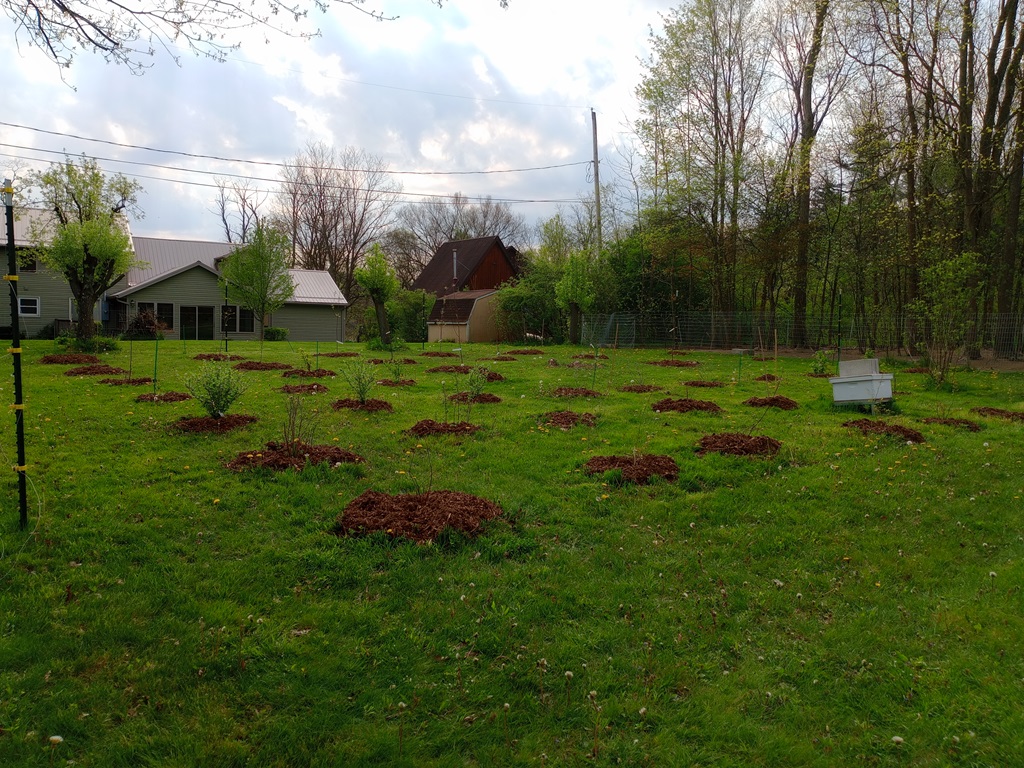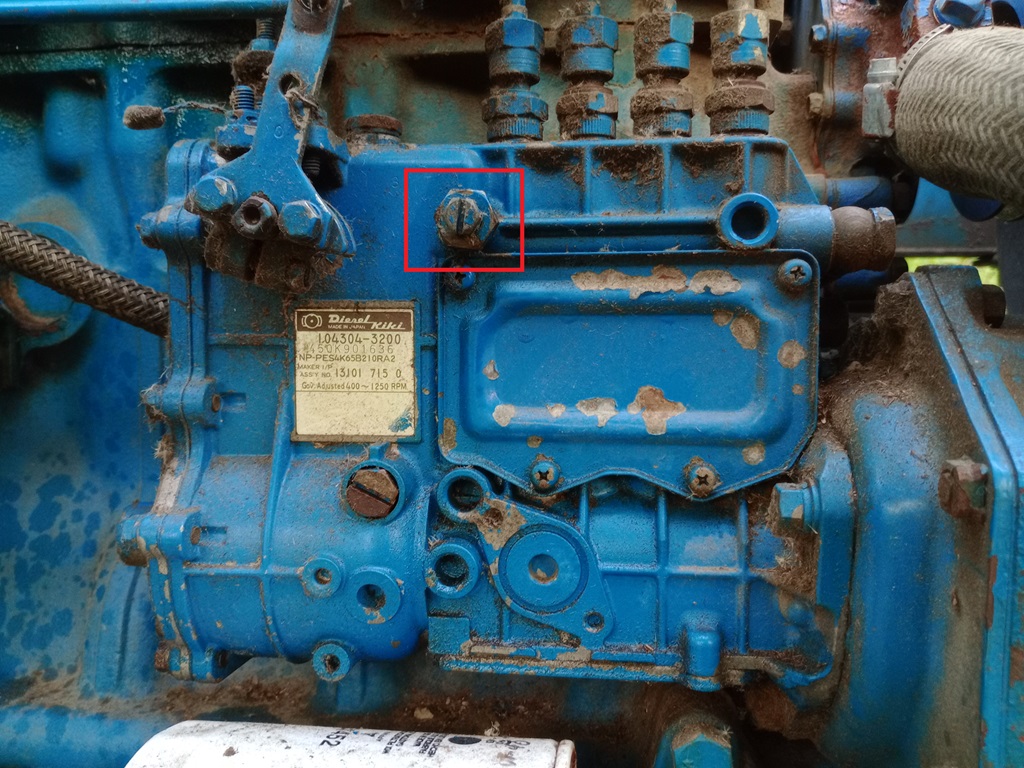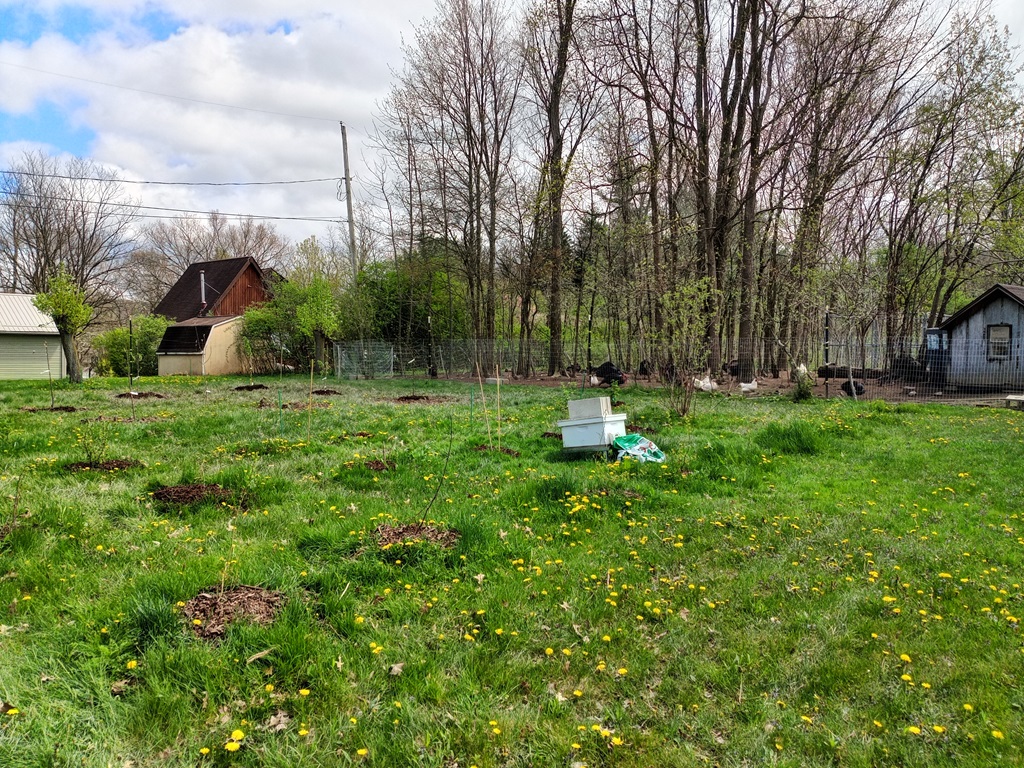The farm access path is, unfortunately, a bit of a soggy, muddy mess! We’re going to level it out with the tractor and drop a bunch of wood chips to help keep the path solid.
Mulching the Orchard
Restarting Ford 2110 After Running Out Of Diesel
We found a lot of instructions online for restarting a tractor after running out of diesel. It boils down to following the fuel line out of the tank and bleeding everything. The bleed screw on the fuel filter was pretty obvious – Philips head screwdriver, open it up, let it bubble until fuel flows, then lock it down. The injectors were obvious — and I need to check what size wrench we used. But the middle one … not so much. Figured I’d put a picture for anyone else who has the bad fortune to run out of fuel in their tractor. After bleeding air from the fuel filter, move on to this screw. An 11/16″ wrench to loosen the bolt head and a flat-head screwdriver. From there, move to the injectors. Voila, the tractor goes vroom again.
Kitten Cake
Cat Treats – With Pumpkin!
We grew pumpkins last year, and I wanted to make something for the cats too
8 oz cooked tuna
1 egg
1 oz shredded carrot
1 oz cooked pumpkin, mashed
1 oz olive oil
1 pinch catnip
7 oz oat flour
Preheat the oven to 350F
Mix everything except the oat flour together, the slowly stir in the flour to form a dough.
Spread on baking tray about 1/2″ thick & cook for 10-15 minutes. Cut into small rectangles and allow to cool. Serve to happy kittens!
Orchard Progress
Leaves are sprouting on almost all of the trees and bushes! There are two blueberries that might need to be replaced. And one honey berry that I am pretty sure has a leaf sprouting.
But the orchard is getting full — 2 pawpaws, 3 pears, 6 apples (although one still needs to be moved), 3 cherries, 2 peaches, and 1 fig. The third peach needs to be planted after the fig is moved. And I should have a second fig ready to plant this spring from a cutting I took last year. Two currants — the two replacements won’t get here until the end of May! Three honey berries, three seaberries (plus one more to plant this year), three gooseberries, seven raspberries, and ten blueberries (well, somewhere between eight and ten … we’ll know in another week or two!)
Low Effort Duck Confit
Although this takes a long time to cook, it’s very low effort and delicious.
Pat duck legs dry. Score the skin and salt liberally. Let rest for about an hour.
Put duck legs, skin side up, into a small casserole dish — you don’t want too much space because the fat renders out and fills the dish. Place in an oven and heat to 285F. Cook for about two hours. The duck should be partially submerged in the oil.
When the duck is tender, raise heat to 375F and cook for about 15 minutes to crisp the skin.
Let rest for about 15 mins and serve.
Eclipse
Pita
To go with the smoked lamb, I made pita and tzatziki sauce. The pita was a basic dough recipe (although fairly wet dough!)
2 1/2 tsp active dry yeast
1 2/3 cups warm water about 95 degrees F
1 tsp maple syrup
1 1/4 tsp kosher salt
4 cups unbleached all purpose flour
Maple and water were mixed together & yeast added. The mixture sat on the counter for about twenty minutes and was really frothy. Salt and flour combined in the mixer, then the liquid added and dough kneaded for about ten minutes. Left to rise for about an hour, then split into eight balls, rolled out, and baked at 500F until puffed (4-5 minutes).











